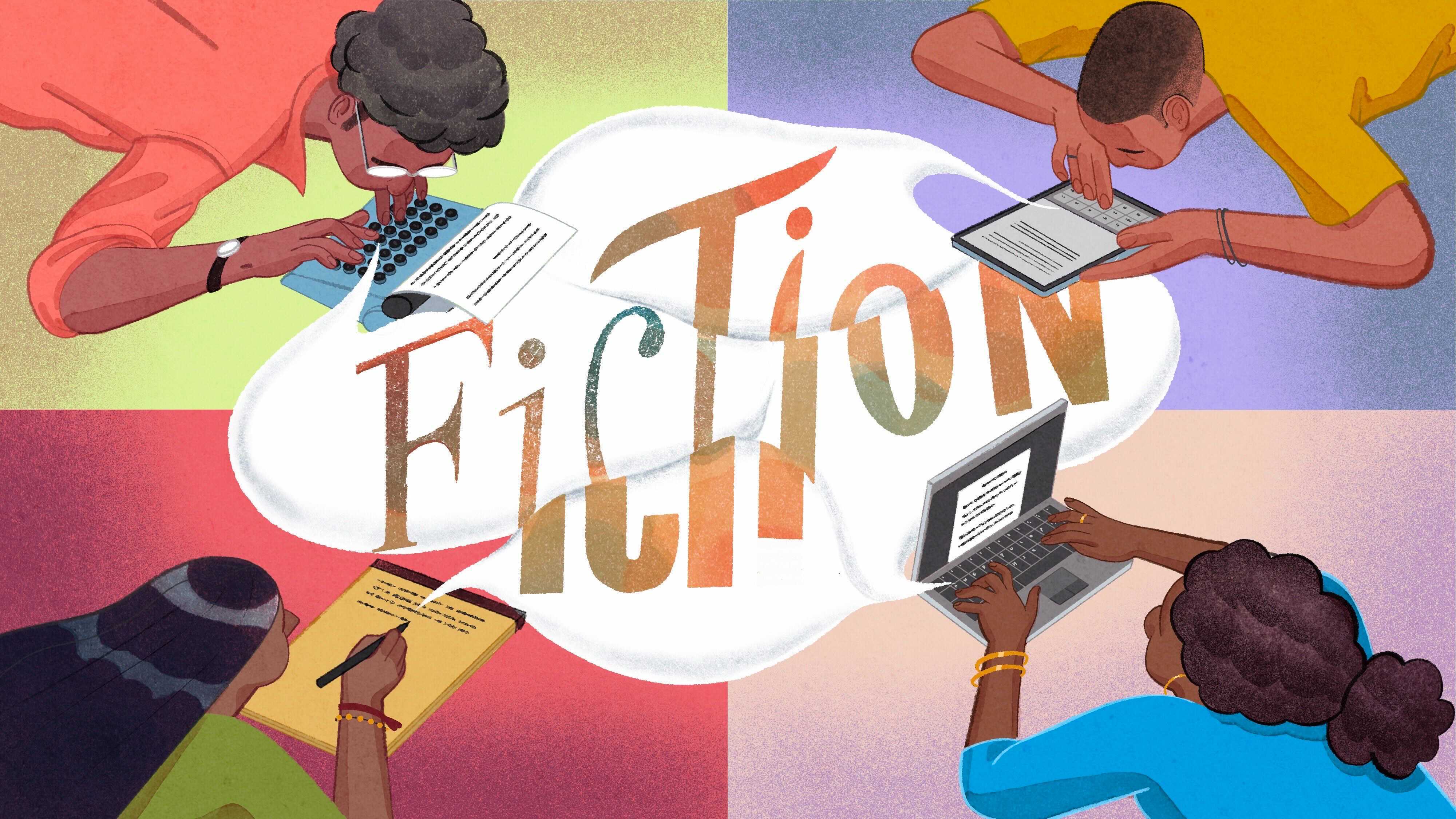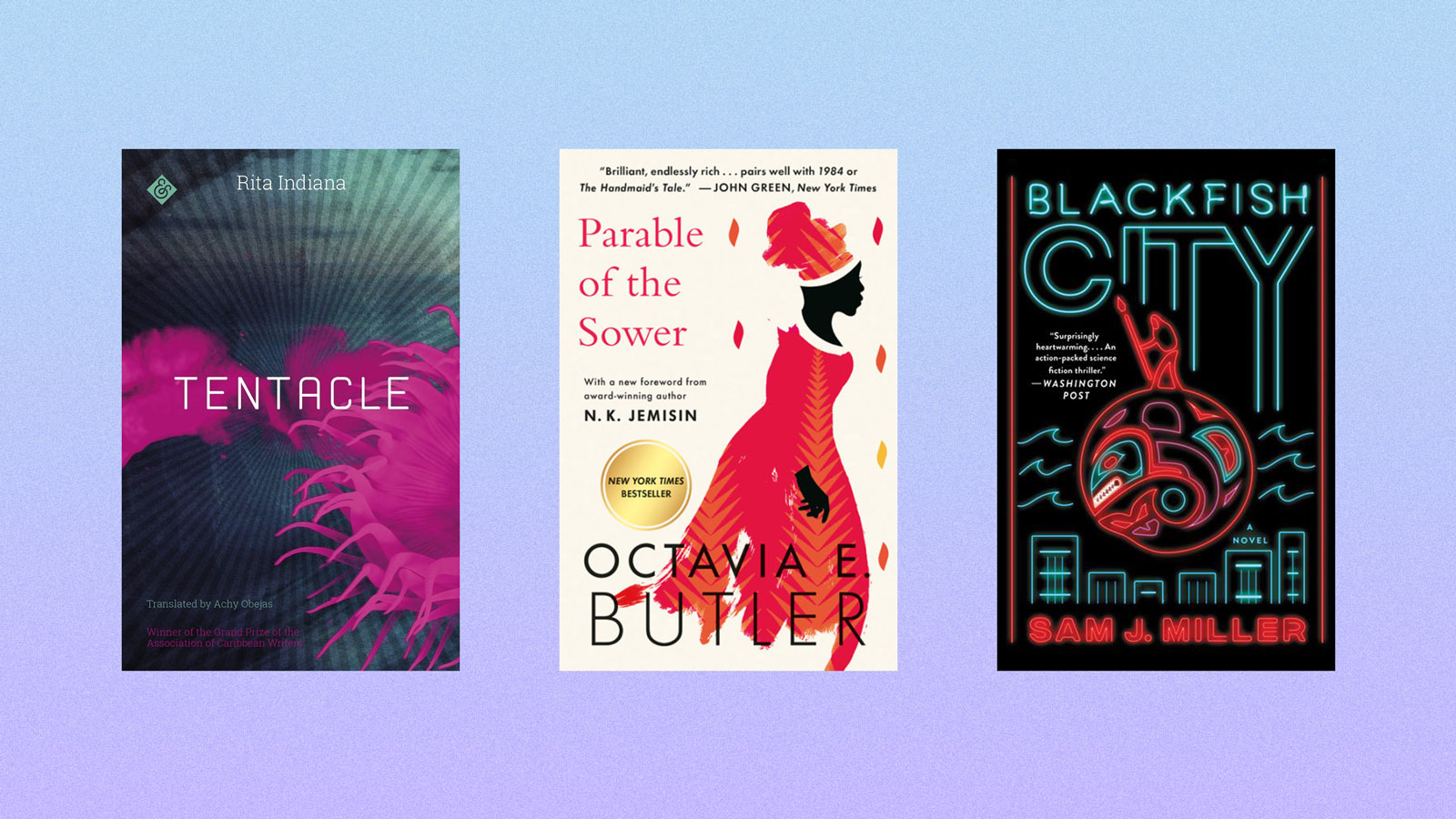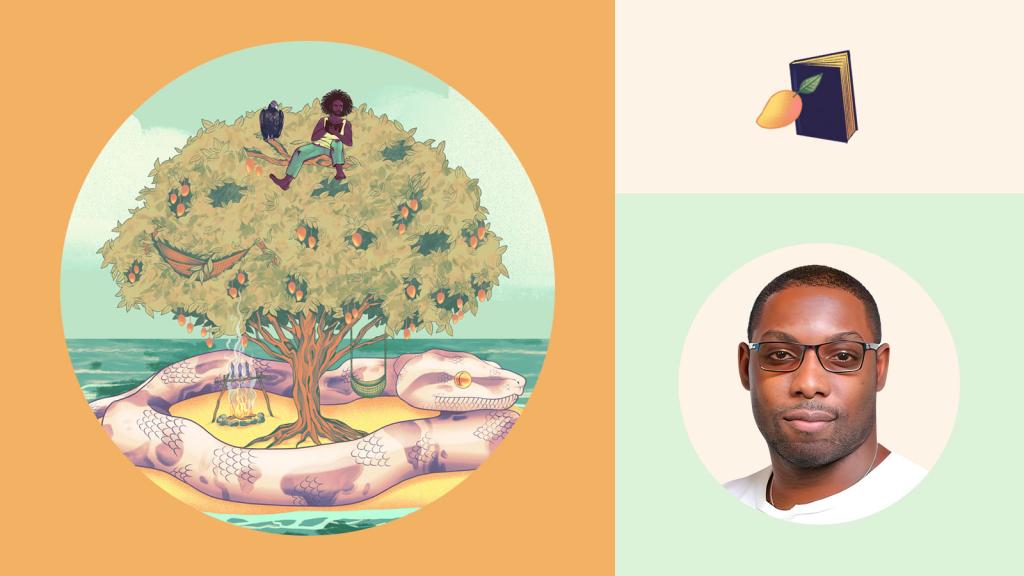Grace L. Dillon is a professor in the Indigenous Nations Studies Program at Portland State University, and is of Anishinaabe and European descent. She edited Walking the Clouds: An Anthology of Indigenous Science Fiction and coined the term Indigenous futurisms.
Indigenous peoples often say that from maewizhah, or time immemorial, we have gazed upon ae-iko-dawo-dunnauk-mishi-geezhik and created stories that are maumikaud-kummik. In other words, throughout our histories, Native peoples have looked to the heavens, pondered the universe, and composed fantastical tales that, translated literally, are “out of this world.”
This is the very definition of speculative fiction.
To us, storytellers are artists and medicine people who provide mishkiki: medicine, healing, and sometimes even solidarity — or, as we say in Anishinaabemowin, inauwinidiwin, which means collectively becoming a “group walking in a body.” When these creatives place frontline communities and characters at the heart of their stories, readers can challenge themselves to become inauwinidiwin, or the coming together as one body-mind on our beautiful yet beleaguered Mizzu-kummik-quae, or Mother Earth.
Fiction has the power to do that, because it encourages readers to dream and allow their imaginations to roam freely. Anishinaabe peoples have a long history of turning exactly this kind of imagining and thinking into something concrete. The exercise of crafting a story becomes, literally, “thinking as will.” When writing that way, words become so powerful that simply reading them can inspire direct action. It’s that spirit of turning thinking into doing that underlies diverse perspectives within stories of climate justice and makes the representation of all peoples within climate fiction so essential — and enlightening.
The question, then, is how do shared modes of human understanding and creativity reflect fundamentally different, yet still entangled, worlds? How can the lived experiences of Black, Indigenous, and other people of color be fully captured in climate narratives, especially when set in the future?
I coined the term “Indigenous futurisms” in 2003 while editing Walking the Clouds: An Anthology of Indigenous Science Fiction. Much like Afrofuturism, Latinx futurism, and the like, Indigenous futurisms is a literary and artistic movement that expresses Native perspectives of the past, present, and future. These genres encompass the myriad communities too often overlooked within speculative and science fiction. Still, they can be limiting in their singularity.
Enter Bodhisattva Chattopadhyay of the University of Oslo, who brings an international lens to the examination of these viewpoints with his CoFutures research project. He and his team believe that pondering the future — of humanity, technology, or even the planet itself — requires understanding how people of different backgrounds and experiences think about that future. Establishing and promoting connections between diverse communities is essential to addressing planetary challenges. When climate fiction adopts a cofuturism approach, it can introduce readers not only to new worlds but new perspectives.
Aymar Jean Christian of Northwestern University historically contextualizes and updates the notion of intersectional storytelling in his recent book Race and Media: Critical Approaches. “Most creators are ‘intersectional,’ meaning they identify with multiple communities marginalized by their race, class, gender, sexuality, ethnicity, religion, disability, or citizenship status,” he writes. He argues that the framework of intersectionality was developed throughout the 20th century by women writers of color like Sojourner Truth, Audre Lorde, and Kimberlé Crenshaw. Those early intersectional writers sought to describe “the interlocking nature of oppression and the specificity of being both Black and woman (and often queer).”
In these stories, says Christian, the writers acknowledge their people’s history of oppression while flipping the script to show how strength and innovation are connected. In that sense, readers are forced to question their own ideologies while “Black women’s speculative fiction allows for a challenge to the attitudes, biases, and behaviors that result from them.” It’s an expansive kind of writing that triumphs over the limitations of a singular futurism.
[Read: Can climate fiction deliver climate justice?]
Climate justice stories set in the future that center the most vulnerable tend to showcase the strong, resilient, and self-determined nature of their protagonists; these are the communities often leading the way to a more sustainable, more just future. And so that future is ours to seek, changing the inevitability of climate chaos to the ingenuities of hope and justice.
Climate change is as much about humanity as it is about industry, and it is creative efforts that will ultimately move hearts and minds to address the problem.
In Climate Change, Literature, and Environmental Justice: Poetics of Dissent and Repair, Janet Fiskio of Oberlin University writes that climate vulnerability is the latest example of the environmental racism that began with slavery and colonization. “To claim that humanity has never faced radical climate change before ignores the experience of Africans who were brought to the United States and found ways to provision themselves, and also the experience of North American Indigenous peoples who were moved to reservations in completely different biomes,” she writes.
The activism inherent in climate justice stories aligns with collective visions of routine practices in different communities. For example, things like “toxic tours” of Native lands and communities, planting seeds for grassroots activism among youth align with several recent novels of Indigenous futurisms — including Home of the Future Living God by Anishinaabe author Louise Erdrich and The Marrow Thieves (which is being adapted for television) by Cherie Dimaline of the Metis Nation.
Some climate fiction emphasizes the importance of youth advocating for justice while also dealing with citizenship or immigration issues, as seen in Ambelin Kwaymullina’s Tribe trilogy. The Palyku Nation writer’s first book in the series, The Interrogation of Ashala Wolf, details forms of climate justice that are rooted in hope, where a future Palyku system in Australia is entwined with the remaining colonial legal histories of who counts as an actual citizen and who becomes imprisoned as an illegal resident.
When climate justice stories are infused with a sense of body-mind-spirit, a kind of neural decolonization can seep in. As the Red Nation’s The Red Deal: Indigenous Action to Save Our Earth puts it, over and over again, we have a choice to make: decolonization or extinction.
Climate change is as much about humanity as it is about industry, and it is creative efforts that will ultimately move hearts and minds to address the problem. “You cannot underestimate the power of arts as a means of change,” Canadian Inuit activist Sheila Watt-Cloutier wrote in The Right to Be Cold: One Woman’s Fight to Protect the Arctic and Save the Planet from Climate Change. “There is more ‘giving birth’ to life through these extraordinary works of art that are so grounded in spirit.”
May we all express our radical love through climate justice stories and art fused with science and imagination: Zhawaendaugoziwin, or mercy, good fortune, and compassion, to all.
Explore more from Fix’s Climate Fiction Issue:
- How a fictional forestlike burial ground could replace traditional cemeteries
- An interview with cli-fi author Ailbhe Pascal on writing a future for their communities
- Read the 12 winning stories of Fix’s climate-fiction contest




